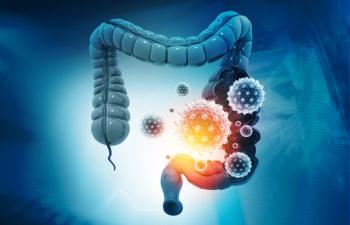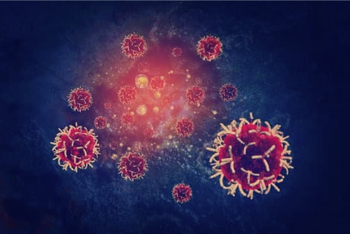
Chlorotoxin-Directed Cell Therapy May Have Useful Mechanism in Glioblastoma
A novel CAR T-cell therapy may bind with more avidity, rather than affinity, to glioblastoma cells, said Michael Barish, PhD.
Michael Barish, PhD, spoke with CancerNetwork® about the inspiration for a phase 1 trial (NCT04214392) investigating the feasibility and safety of chlorotoxin-directed CAR T-cell therapy in a small cohort of patients with recurrent glioblastoma. Additionally, he discussed how the novel agent, which leverages a peptide toxin component of scorpion venom, may offer mechanistic advantages compared with other cellular therapies.
Barish noted that the research originated from a collaboration with team members including Christine Brown, PhD, deputy director of the T Cell Therapeutics Research Laboratory and professor in the Departments of Hematology & Hematopoietic Cell Transplantation and Immuno-Oncology at City of Hope. Regarding the mechanism of the agent, he described how it may bind with good avidity to glioblastoma cells compared with other modalities, which may limit on-target, off-tumor toxicities.
Barish is a chair in the Department of Neurosciences/Developmental & Stem Cell Biology at City of Hope.
Transcript:
This [research] was done in collaboration with Christine Brown, PhD, who’s an immunotherapy [faculty member] at City of Hope, and I am a neurobiologist by training. We have talked quite a bit, Christine and I, about glioblastoma, and I had this idea that maybe we could use the toxin this way. It started [with the thought of], “Let’s try and see what happens.”We were quite prepared for it to be one of those bright ideas that does not pan out...but the fact that it went to a clinical trial was quite surprising to us. Of course, we were pleased, but it was unexpected. I think it’s important to emphasize that Christine is half of the story.
Mechanistically, the advantage is that [the CAR T-cell therapy] will bind, as far as we can tell, to more glioblastoma cells within a tumor—because the tumors themselves are heterogeneous—and to the tumors of more patients than any other recognition element we can think of that we could put on an engineered T cell. That’s why it’s important. It does not bind with great affinity, but it binds with good avidity, meaning that it’s extremely specific for the glioblastoma cells as compared to any other cells in the body. That mechanism is very important because we did not want on-target, off-tumor effects, which would be quite bad. That characteristic made it very useful for us.
Reference
Barish ME, Aftabizadeh M, Hibbard J, et al. Chlorotoxin-directed CAR T cell therapy for recurrent glioblastoma: interim clinical experience demonstrating feasibility and safety. Cell Rep Med. 2025;6(8):102302. doi:10.1016/j.xcrm.2025.102302.
Newsletter
Stay up to date on recent advances in the multidisciplinary approach to cancer.



















































































